International traditions around Halloween have become more popular in Norway in recent years. Here's what to expect if you're in Norway around Halloween.
What began as an imported curiosity from American films and TV has now become a fixture of late October life, especially for children.
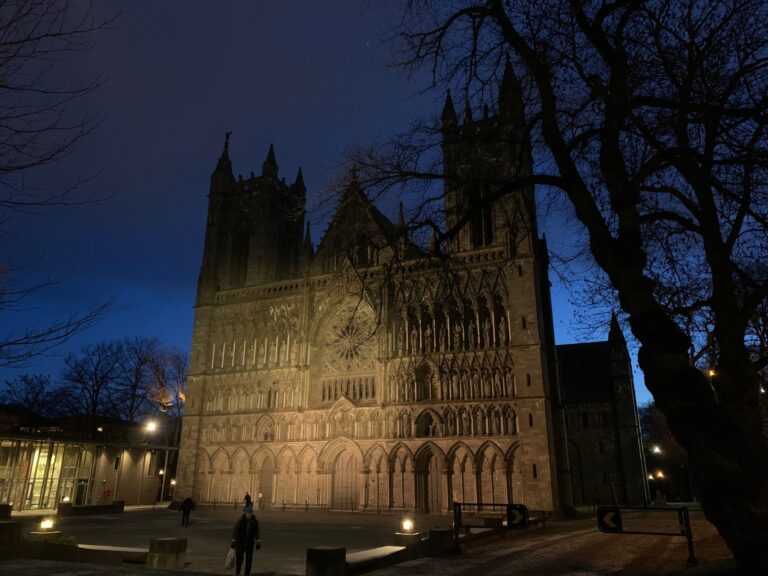
Pumpkins, costumes, and trick-or-treating are now familiar sights in many towns, while teenagers and adults use the opportunity to throw themed parties or watch horror movies.
At the same time, Halloween in Norway looks and feels different from its American counterpart. Decorations are modest, trick-or-treating is carefully supervised, and there is still a certain scepticism among some Norwegians about the holiday’s commercial and foreign origins.
Whether you’re living in Norway or just visiting, here’s what to expect when spooky season rolls around.
From America to Norway
Although rooted in Celtic and Christian tradition, the Halloween we know today developed in the United States. In Norway, it first appeared on TV screens in the 1990s, but for years few people bothered with it beyond the occasional themed party in student towns.
The turning point came in the 2000s and 2010s, when supermarkets and toy shops began stocking Halloween costumes and decorations. As with Valentine’s Day, once Norwegian retailers embraced the idea, the holiday took hold.
Today, Halloween is firmly part of the calendar, although not without controversy. Some parents and teachers still resist it, describing it as too commercial and “too American.”
Yet for children, the appeal of dressing up and collecting sweets is irresistible.
How Norwegians Celebrate Today
In the weeks leading up to Halloween, stores dedicate whole aisles to orange-and-black displays.
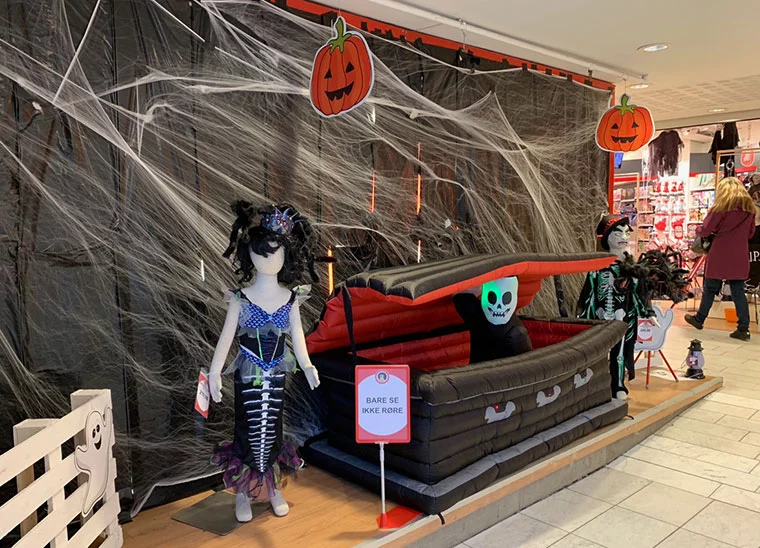
Costumes, masks, plastic pumpkins, fake cobwebs, and bags of sweets all appear, although the choice is still limited compared to other countries.
Pumpkins are the main decoration you’ll notice. Carved jack-o’-lanterns with candles glowing inside are increasingly common on porches and in windows.
Beyond that, most Norwegian homes remain understated. Don’t expect elaborate haunted-house-style decorations.
Trick-or-treating has become the highlight for many children. Groups of kids, often with parents in tow, go door to door shouting “knask eller knep” (trick or treat) or in some areas “digg eller deng” (sweets or a scare).
Unlike in the USA, it tends to be short and sweet. Visits are limited to houses in the immediate neighbourhood, and the atmosphere is friendly and low-key.
For teenagers and adults, Halloween often means parties. Costume house parties or nights out in clubs and bars are usually held on the weekend closest to 31 October.
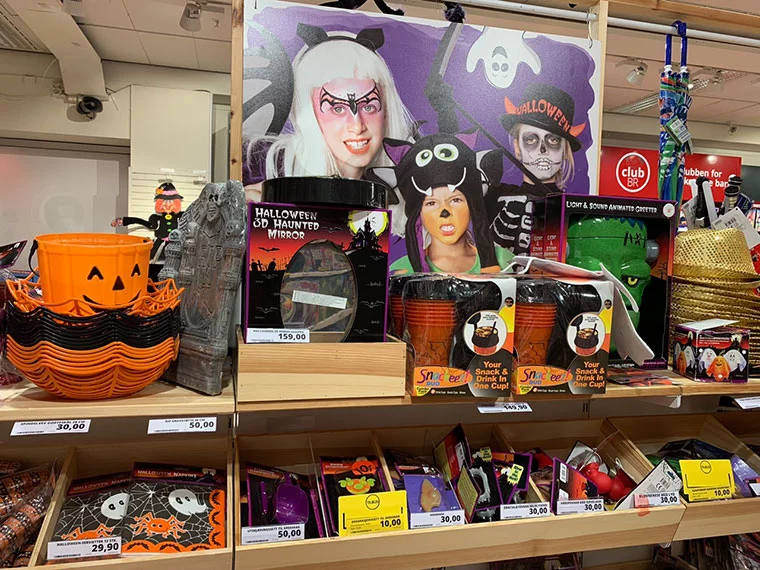
Step on a bus in a Norwegian city that weekend and you’re likely to be surrounded by vampires, witches, and zombies heading into town.
Scary Films and TV for Spooky Season
Like elsewhere in the world, watching horror films has become a popular Halloween activity in Norway. What makes it special here is the way Norwegian filmmakers use the country’s landscapes, folklore, and dark humour to put their own stamp on the genre.
Død Snø (Dead Snow)
Arguably Norway’s most famous horror export, Død Snø (2009) is a splatter comedy that quickly gained cult status.
The premise is outrageous (Nazi zombies hidden in the Norwegian mountains) but it is delivered with a knowing wink and plenty of gory effects. Its sequel, Død Snø 2: Red vs Dead (2014), ramped up the absurdity and attracted an international fan base.
Villmark (The Wilderness)
Released in 2003, Villmark helped relaunch the Norwegian thriller genre. Following a group of people taken to a remote cabin for a reality TV show, it taps into the classic “don’t go into the woods” trope. Its 2015 sequel, set in a derelict asylum, leaned more toward psychological horror.
Trollhunter
This 2010 found-footage mockumentary takes a very Norwegian approach, blending myth and modernity. The film follows students investigating bear killings, only to discover a government conspiracy involving trolls roaming the wilderness.
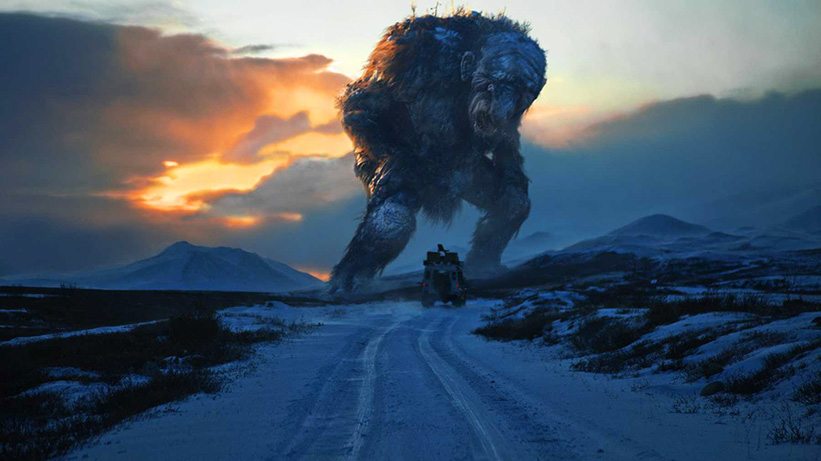
Its combination of folklore, dry humour, and impressive effects made it a surprise international hit.
Other Horror Films
Several other Norwegian productions add to the Halloween watchlist. Fritt Vilt (Cold Prey, 2006) tells the story of snowboarders stranded at an abandoned hotel in the mountains — a distinctly Norwegian take on the slasher formula. The film was successful enough to spawn two sequels.
Another example is Thale (2012), which draws directly on folklore. It follows two crime scene cleaners who discover a young woman with a tail hidden in a basement. It's a modern retelling of the hulder, a seductive forest creature from Scandinavian legend.
Norwegian Horror on TV
TV has also embraced the horror and thriller genres in recent years. Beforeigners (HBO, 2019) is not strictly horror, but its eerie premise—people from the Stone Age, Viking Age, and 19th century suddenly appearing in modern Oslo—carries unsettling undertones.
Meanwhile, series like Jordskott (a Swedish-Norwegian production) mix crime drama with Nordic folklore, introducing mythological creatures in dark forest settings. These shows are not directly tied to Halloween, but they feed into the growing appetite for Scandinavian “scandi-noir” with supernatural twists.
Halloween Screen Culture
Although Norway doesn’t produce as many horror films as the United States or Japan, those it does make often feel uniquely local. Isolated mountain cabins, dark forests, and long winters provide the perfect backdrop for suspense.
Around Halloween, cinemas often re-run both international horror classics and popular Norwegian titles, making a scary movie night one of the easiest ways to join in the spooky spirit.
Haunted Norway
Norway’s long, dark winters and dramatic landscapes have always inspired eerie tales. While Halloween is a relatively new import, the country has no shortage of ghost stories and places said to be haunted.
For many Norwegians, the darker nights of late autumn are the perfect backdrop for retelling them.
Nidaros Cathedral, Trondheim
The medieval Nidaros Cathedral is not only Norway’s national sanctuary, but also one of its most haunted buildings.

For more than a century, stories have circulated about the ghost of a monk who appears in the dim light of the aisles. Witnesses describe him as hooded, sometimes carrying a candle, sometimes gliding silently past the organ loft.
Some visitors even claim to have heard faint chanting or organ music when the cathedral is locked up for the night. Local legend says that meeting the monk is a bad omen, particularly for clergy.
Akershus Fortress, Oslo
The capital’s medieval fortress is another hotspot for supernatural tales. Over its long history, Akershus has served as a royal residence, military stronghold, and prison.
With so much bloodshed and suffering within its walls, it is little wonder that ghost stories have flourished. Soldiers on night duty have reported feeling invisible hands shove them, while others speak of sudden drops in temperature.
The most famous legend is that of Malcanisen, the demon dog supposedly buried alive centuries ago to protect the fortress. If its ghost crosses your path, death is said to follow within three months.
Lier Asylum, Viken
Although officially closed in the 1980s, the abandoned psychiatric hospital at Lier has become infamous as Norway’s creepiest ruin.
The empty wards, peeling paint, and broken furniture make an unsettling setting, and stories abound of strange sounds and shadowy figures moving through the halls. Paranormal investigators and curious trespassers alike have reported sudden chills and feelings of dread.
While the buildings are now sealed off, their reputation continues to grow each Halloween.
Nes Church Ruins, Akershus
Not all ghost stories are tied to castles or asylums. Even rural church ruins have a reputation for the supernatural. At Nes, drivers have reported car locks and lights malfunctioning when parked nearby.
People walking among the ruins describe a strange heaviness in the air, as though they are wading through water. Local folklore says the restless spirits of those buried in the old churchyard never left.
Fredriksten Fortress, Halden
This imposing fortress near the Swedish border has seen centuries of warfare. Most famously, it was here in 1718 that King Charles XII of Sweden was killed during a siege.
Some believe his spirit never left, and sightings of a spectral figure in military dress are still reported. Visitors also tell of hearing phantom footsteps in the tunnels and rooms suddenly turning icy cold.
A Modern Take on Ghostly Traditions
While modern Halloween focuses on costumes and candy, Norway’s folk tradition has long included ghostly elements. Winter nights were seen as a time when the veil between the living and the dead grew thin.
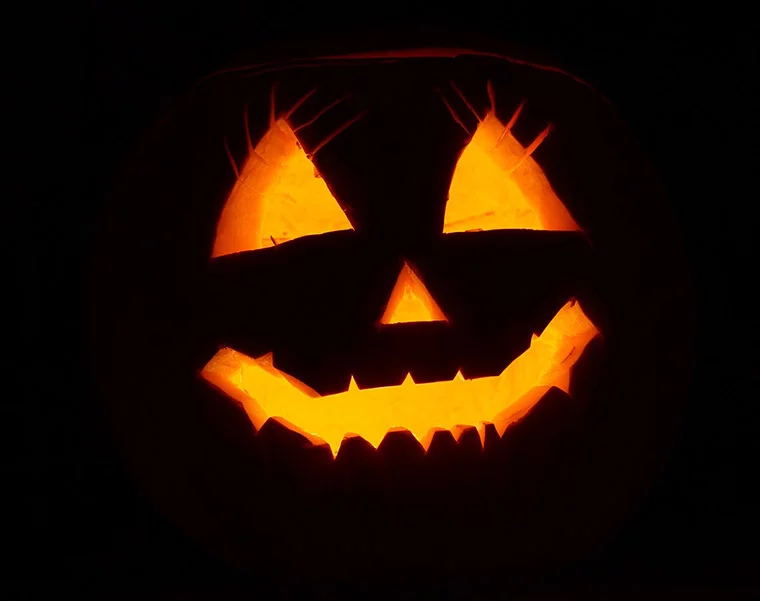
Farmers once believed the spirits of the dead returned to visit their homes around Christmas, and many set out food for them. That same sense of connection to the unseen world lingers in today’s ghost stories.
But despite its growing popularity, Halloween still divides opinion in Norway. Some families choose not to take part, viewing it as unnecessary commercialism. Others prefer older traditions, such as All Saints’ Day, when candles are placed on family graves in early November.
But for children, the excitement of costumes, sweets, and a night of adventure is hard to beat. Each year, more neighbourhoods join in, and Halloween continues to grow as part of Norwegian autumn life.
The Origins of Halloween
Halloween’s roots go back to Samhain, an ancient Celtic festival marking the end of the harvest season. People lit bonfires and carved faces into turnips to ward off spirits.
As Christianity spread, the evening became All Hallows’ Eve, the night before All Saints’ Day. Children would visit neighbours for food in exchange for prayers.
In the United States, these traditions merged and transformed during the 19th and 20th centuries into the modern celebration of costumes, pumpkins, and candy. From there, Halloween spread around the world, and eventually to Norway.
Practical Tips for Halloween in Norway
If you happen to be in Norway during Halloween, here are a few things to keep in mind:
- Expect trick-or-treaters if you live in a family neighbourhood. Have a small supply of sweets ready.
- Don’t be surprised if decorations look minimal. A pumpkin in the window may be all you see.
- Trick-or-treating happens early. Children usually go out in the early evening, often before 8pm.
- Not every house takes part. If the lights are off or there’s no pumpkin, children usually skip that door.
- It’s not a public holiday. This might sound obvious, but I have been asked this before! Halloween is not a public holiday in Norway, so expect schools, shops, and workplaces to run as normal on 31 October.


The church has its friendly Hallovenn. Fun, sweet and kind
In many parts of America (region and countries neighboring to and including the United States) Halloween is often recognized as Day if the Dead by predominantly Hispanic Catholics. By this name alone, this influence causes a deeper and often religious observance of the day. Within a day or two after, All Souls Day is observed. In no way is this observance strictly patronized by Catholics only.
Modern Halloween practice is mostly recognized as a fun evening with the kids trick-or-treating around the neighborhoods. Homes are often decorated with elaborate scary motifs. Historically, when the porch light is turned off, it means that home has run out of candy to give, or they are not participating at all. Adult themed parties are often held late into the evening, but perhaps somewhat less in number than other major holidays.
Both the Day of the Dead and All Souls Day are frequently recognized as Catholic observances, but this is not limited to just Catholics.
I would like to hear more on Norway’s celebration/recognition of Halloween! What is Halloween called in Norwegian?
Lots of times Norwegians just use the english word with a Norwegian accent when there is no norweginan equal to that english word… Halloween, is more of an American tradition so most people just say “Halloween”
My son had the very first Halloween party in his neighborhood, Hosle, when he was eight, I think. That would have been 2004. We decorated the house and yard with cobwebs, skeletons, etc. that I brought from the US and gave out candy to the guests. Now they go trick or treating in the neighborhood.